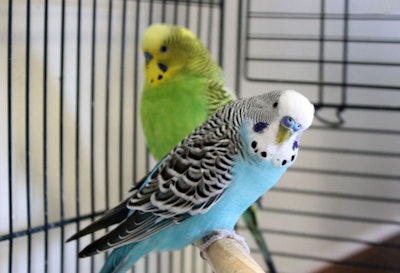
The Packaged Facts report “Bird Products: US Pet Market Trends and Opportunities” features analysis of the sale of products and foods designed for pet birds through all channels in the US market, focusing on the key segments driving the market and highlighting sales trends. The report covers sales of food, cages, cage accessories, and more. All information and analyses in the report is presented in concise text and charts, tables, and graphs.
Bird products report methodology
The information in “Bird Products: US Pet Market Trends and Opportunities” was obtained from primary syndicated retail sales-tracking data, consumer survey data compiled by Packaged Facts’ own National Pet Owners Survey, and from Simmons’ Profile Report. Other primary research includes interviews with pet experts, on-site examination of retail and service provider venues, and Internet canvassing including websites and blogs. Secondary research includes information- and data-gathering from consumer business and trade publications, company profiles, and Packaged Facts’ own extensive pet product research database and report collection.
Packaged Facts studied geography of pet food trends
Packaged Facts' report “Pet Population and Ownership Trends in the US: Dogs, Cats, and Other Pets, 2nd Edition” uncovers stark differences among pet owners that may pose significant challenges for retailers and marketers. The way pet owners view their pets and the criteria they use when deciding which pet products to buy are closely tied to whether they live in urban areas, suburban or outer suburban locales, or rural parts of the country.
Differences in the degree to which pet owners are concerned about the interplay between their pets' health and diet, and the criteria they apply to evaluating pet food ingredients, differed between urban and rural areas. Urban dwellers are nearly twice as likely as rural residents to assert that their pets have special nutrition needs (45 percent vs. 24 percent) and they are even more likely to be concerned about their pets having food allergies or intolerances (51 percent vs. 22 percent).
Regional differences in pet food consumer behavior
The shopping habits of pet owners also differ significantly. Nearly two in three (63 percent) urban pet owners buy pet products online compared to just 42 percent of pet owners living in suburban/outer suburban areas and only 32 percent of rural pet owners. There also are substantial differences in the bricks-and-mortar shopping behavior of pet owners, which probably reflect the choices open to rural and urban pet owners as well as their preferences. More than half (52 percent) of rural pet owners buy pet foods at Walmart, compared to just 37 percent of urban pet owners. Just 18 percent of rural pet owners buy pet foods at PetSmart, compared to 42 percent of urban pet owners.
Pet product marketers might take note of other aspects of the consumer behavior of urban, suburban and rural pet owners that may reflect differences in their underlying political sensibilities or social values. Around seven in 10 (69 percent) pet owners living in urban areas assert that "the participation by pet product brands in pet welfare and rescue causes and events plays a significant role in which brands I buy." Only 32 percent of rural pet owners and just 39 percent of pet owners living in areas categorized as suburban/outer suburbs feel the same way.
Suburban/outer suburbs pet owners are much more likely to agree that "corporate responsibility on the part of the manufacturer plays a role in which pet foods I buy (67 percent and 59 percent, respectively). However, these percentages are significantly lower than the 88 percent of urban pet owners who ascribe to this belief.















